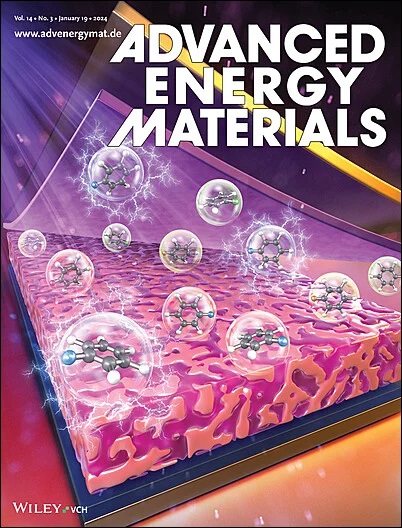Contact Lithiation‐Assisted Alloying Enabling Fast‐Charging Silicon Anodes
IF 26
1区 材料科学
Q1 CHEMISTRY, PHYSICAL
引用次数: 0
Abstract
Lithium (Li) dendrites form during fast charging due to sluggish alloying kinetics, causing poor cycling stability and safety risks in silicon (Si)‐based lithium‐ion batteries (LIBs). Here, we proposed a contact lithiation‐assisted alloying mechanism to accelerate Si anode kinetics. Regulating Li deposits from a loose dendritic form to a dense, adherent layer with enhanced Li diffusion kinetics facilitates contact lithiation with Si, ensuring a fast reaction rate and high Li utilization of the Li deposits, thereby substantially improving the fast‐charging performance of the Si anode. This mitigates dendritic Li plating and the accumulation of inactive Li species on the electrode surface. Decorating Si particles with ultra‐fine (∼10 nm) uniformly distributed Ag nanodomains facilitates conformal Li plating on the electrode surface, enabling in situ contact lithiation and faster alloying kinetics. The Si@Ag electrode exhibited a high average Coulombic efficiency (CE) of 99.2% over 300 cycles at 3接触锂化辅助合金化实现快速充电硅阳极
由于合金化动力学缓慢,在快速充电过程中形成锂枝晶,导致硅基锂离子电池循环稳定性差,存在安全风险。在这里,我们提出了一种接触锂化辅助合金化机制来加速Si阳极动力学。通过增强Li扩散动力学,将Li沉积层从松散的枝晶形态调节为致密的附着层,促进了与Si的接触锂化,确保了Li沉积层的快速反应速率和高Li利用率,从而大大提高了Si阳极的快速充电性能。这减轻了枝状锂电镀和非活性锂在电极表面的积累。用超细(~ 10 nm)均匀分布的银纳米畴修饰Si颗粒,有利于在电极表面镀合形Li,从而实现原位接触锂化和更快的合金动力学。Si@Ag电极在3℃下300次循环的平均库仑效率(CE)为99.2%,而裸硅电极的平均库仑效率为~ 96.4%。a级LiNi₀。₆0 . 2 Mn 0 . 2 O 2。
本文章由计算机程序翻译,如有差异,请以英文原文为准。
求助全文
约1分钟内获得全文
求助全文
来源期刊

Advanced Energy Materials
CHEMISTRY, PHYSICAL-ENERGY & FUELS
CiteScore
41.90
自引率
4.00%
发文量
889
审稿时长
1.4 months
期刊介绍:
Established in 2011, Advanced Energy Materials is an international, interdisciplinary, English-language journal that focuses on materials used in energy harvesting, conversion, and storage. It is regarded as a top-quality journal alongside Advanced Materials, Advanced Functional Materials, and Small.
With a 2022 Impact Factor of 27.8, Advanced Energy Materials is considered a prime source for the best energy-related research. The journal covers a wide range of topics in energy-related research, including organic and inorganic photovoltaics, batteries and supercapacitors, fuel cells, hydrogen generation and storage, thermoelectrics, water splitting and photocatalysis, solar fuels and thermosolar power, magnetocalorics, and piezoelectronics.
The readership of Advanced Energy Materials includes materials scientists, chemists, physicists, and engineers in both academia and industry. The journal is indexed in various databases and collections, such as Advanced Technologies & Aerospace Database, FIZ Karlsruhe, INSPEC (IET), Science Citation Index Expanded, Technology Collection, and Web of Science, among others.
 求助内容:
求助内容: 应助结果提醒方式:
应助结果提醒方式:


